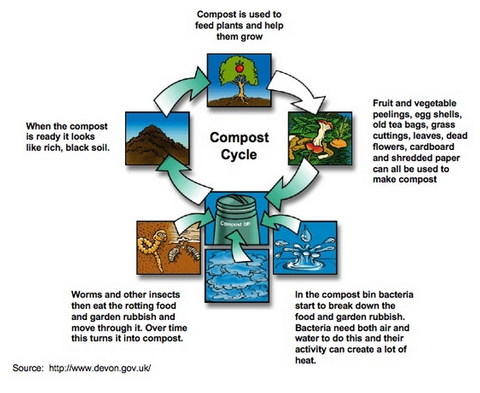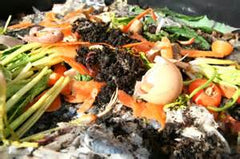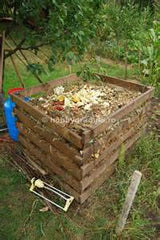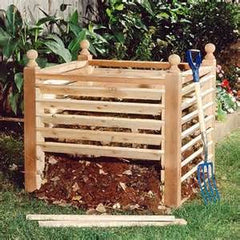How to Compost - The Basics
How to Compost – The Basics
Tweet
Composting has become more and more popular with garden enthusiasts in recent years. It is an excellent way to produce your own nutrient rich fertilizer that is organic and wholesome, while being absent of chemicals found in many commercial fertilizers. The best part is that it is free or can be done at an extremely minimal cost. There are many different techniques and containers in which compost can be made, but this article will focus on the basics of making compost.

Materials for Compost
The basic materials you need to start with are a mix of “brown” and “green” items. “Brown” items are carbon rich and include things like twigs, dry leaves, dirt, wood chips, and hay. “Green” items are nitrogen rich and include things like fruit and vegetable scraps, egg shells, coffee grounds, garden refuse (grass clippings, weeds, etc.), and manure. However, be sure to exclude meat and dairy scraps from your compost materials, as these attract unwanted pests and will begin to smell.


Brown Compost Material Green Compost Material
Management of Compost Pile
Actively managing your compost pile will improve the speed at which the materials decompose and become ready to use in your garden. While some people prefer to make the pile in layers, thoroughly mixing the materials together works as well. The finer that the materials are chopped and mixed greatly improves the speed of decomposition. Achieving a good balance between your “brown” and “green” materials is important as well. While some debate exists about the proper ratio, a minimum of a 4:1 brown to green ratio is typical. A general rule is if your pile starts to smell, then add more “browns”. If the pile is not heating up, then add more “greens”. Adding earthworms to your pile is extremely beneficial as well. Earthworms aid the decomposition process while adding enriched nutrients to your compost mix. It is also important to aerate you pile. This can be done by simply turning it with a shovel, or by poking holes in in with a pipe or long stick. Also important is keeping the pile moist. Compost needs to be watered, but be sure not to leave it too wet. Too wet or too dry is not good for the pile.


General Tips for Composting
- Do not compost fats, pet droppings, meat, or grease
- Newspaper, teabags, and coffee filters are excellent for composting
- Avoid materials that have been treated with chemicals, herbicides, and pesticides
- Compost is ready to use when it resembles a rich and darkly colored soil
- Direct sunlight on your compost pile aids the decomposition process
- A 3’ x 3’ x 3’ compost pile is an ideal size, not too big and not too small

